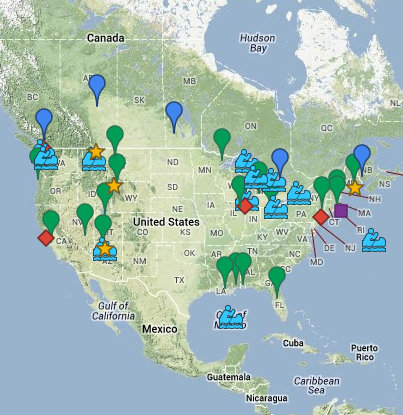
The beach here doesn't amount to much. Iverson Spit, located a short distance south, is much larger and probably traps a bulk of the sediment transported from Barnum Point. The limited sand on this beach may come from the reworking of older marsh or tidal flat deposits, although I suppose some sediment may find its way north from Iverson. Up here at the north end of Port Susan, most of the wave action is from the south, across the broad flats that extend over from the Stilliguamish Delta.
AERIAL VIEW
Over the past few years, a new sandy spit has grown north from this site into the marsh. In a year, the new tidal channel will wind out behind this spit. The big question will be whether the new channel will allow all those trapped logs to escape, or whether they will simply choke the new channel until a really high tide occurs.





No comments:
Post a Comment